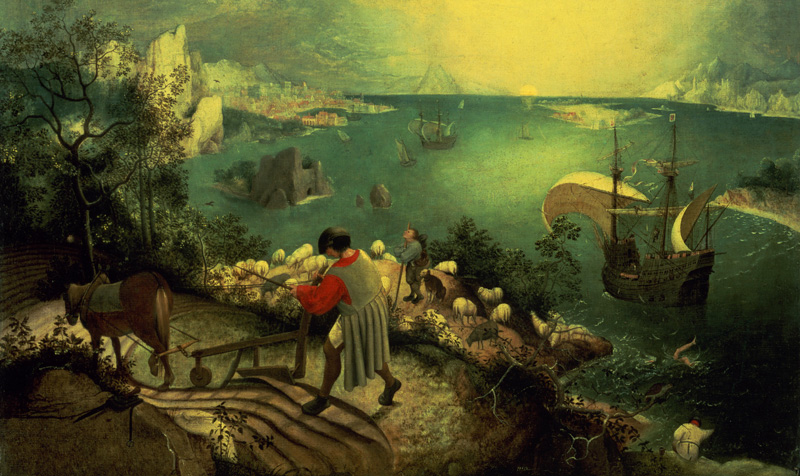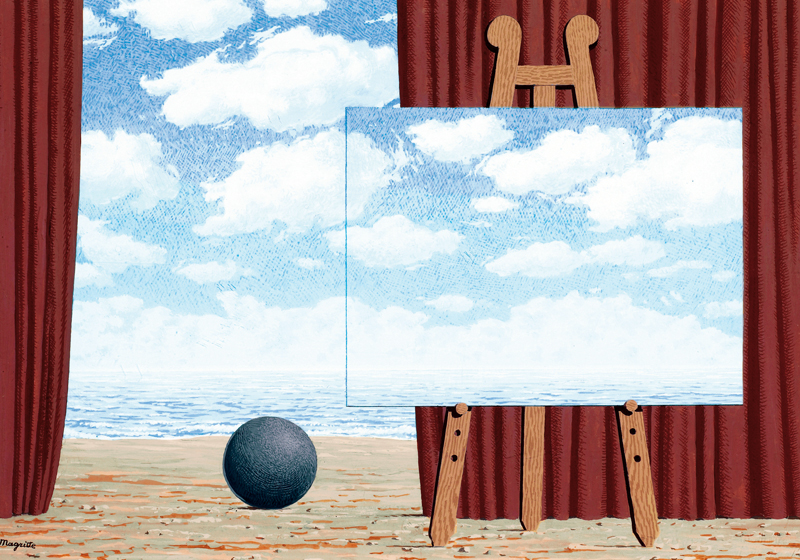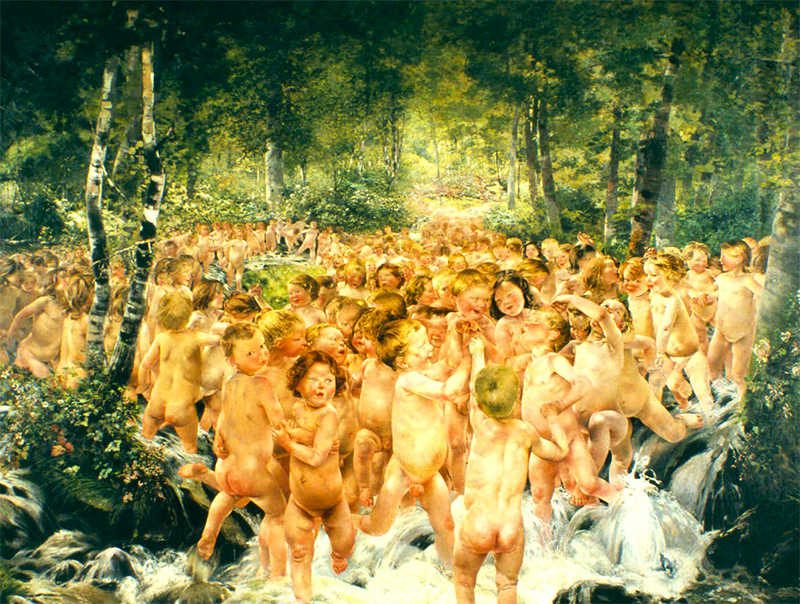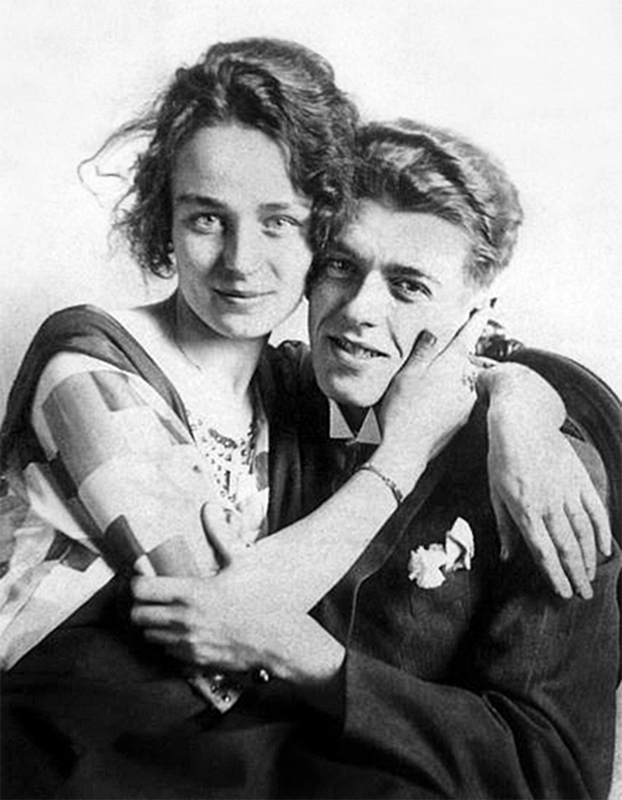< Top 10 of Brussels, Bruges Antwerp & Ghent
 Musées Royaux des Beaux-Arts
Musées Royaux des Beaux-Arts
Brussels’ “Royal Museums of the Fine Arts” are a tour de force. Many of the greatest names in art history are represented here – remarkably, they are predominantly home-grown. The museums are divided into three closely integrated parts, the Musée d’Art Ancien (15th to 18th centuries), the Musée Fin-de-Siècle (19th and early 20th centuries) and the Musée Magritte. The museums are undergoing a major renovation, which means that some exhibits might have been moved, check the website for more information before you go.
Top 10 Works
 The Justice of Othon
The Justice of Othon
This snapshot of brutal medieval life painted by Dirk Bouts (c.1420–75) in 1471–73, is a tale told in two panels – a kind of early comic strip. With brilliant clarity and detail, it depicts how Emperor Othon (Otto II) was fooled by his wife into beheading an innocent man for adultery.
 Lamentation
Lamentation
Rogier van der Weyden was known for the disturbing emotional charge of his work, as in this painting of c.1420– 50 of the crucified Christ in his mother’s arms.
 The Fall of Icarus
The Fall of Icarus

This work of 1567 by Pieter Brueghel the Elder wryly upstages the drama with prettified normality.
 The Martyrdom of St Livincus
The Martyrdom of St Livincus
At his best, Rubens created works of staggering dynamism, compelling the eye to move through the painting, and inspiring a sense of exhilaration and awe. The savagery of this depiction of cruel martyrdom also conveys the power of redemption.
 The Death of Marat
The Death of Marat
The French revolutionary Marat was murdered in his bath by a female assassin. This portrait by Jacques- Louis David is strikingly realistic.
 Portrait of Antony of Burgundy
Portrait of Antony of Burgundy

Flemish artist Rogier van der Weyden painted this portrait of the illegitimate child of Philip the Good (c. 1460). The arrow indicates his membership of the Archers’ Guild.
 The Martyrdom of St Sebastian
The Martyrdom of St Sebastian
Hans Memling’s painting (c. 1475) depicts St Sebastian’s untimely end. The saint was shot to death by royal archers for converting to Christianity.
 The King Drinks
The King Drinks
Flemish Baroque artist Jacques Jordaens perfectly captures the muscular joviality of a feast at Epiphany in his painting of 1640.
 Four Studies of the Head of a Moor
Four Studies of the Head of a Moor
This quadruplet of sketches (c. 1640) shows Peter Paul Rubens’ attempts to capture the exotic nature of his subject. The same sketch also appears in his Adoration of the Magi (1609).
 The Domain of Arnheim
The Domain of Arnheim
René Magritte poses visual conundrums. In this painting of 1962, ambiguous feelings of threat and protection are suggested simultaneously.
Tip: The Museums may be quieter mid-week during the middle of the day so this can be a good time for a more leisurely visit.
Tip: The Museums have their own good cafeteria. Far more exciting, however, is, MIM on top of the nearby Musée des Instruments de Musique; and just a short walk away are the cafés of the Place du Grand Sablon, including the exquisite chocolatier Wittamer.
Gallery Guide
Visitor Information
- Rue de la Régence 3
- 02 508 32 11
- www.fine-arts-museum.be
- Open 9am–5pm Tue–Sun
- Admission €13, including entry to the Magritte Museum; otherwise, €8 (€2 for 6–25 yrs, under 6s free). Free admission on 1st Wed of each month after 1pm
< Top 10 of Brussels, Bruges Antwerp & Ghent
 Beaux-Arts: Features and Collections
Beaux-Arts: Features and Collections
 The Buildings
The Buildings
Set on the crest of the Coudenberg, the old royal enclave of Brussels, the museum’s main buildings were designed by one of the leading architects of the day, Alphonse Balat (1818–95). He is also famous for designing the royal greenhouses at Laeken (For further details see Serres Royales) and for having taught Victor Horta.
 Renaissance/Flemish Primitives (Blue Section) Blue Route
Renaissance/Flemish Primitives (Blue Section) Blue Route
The earliest rooms contain enough 15th- and 16th-century work for an entire visit. The creations of the early Flemish oil painters (the so-called “Primitives”) show the influence of the medieval manuscript illuminators; later works reveal the increasing influence of the Italian Renaissance.
 The Brueghel Collection
The Brueghel Collection
The Blue Section also includes the world’s second largest collection of work by Pieter Brueghel the Elder, which hang alongside paintings by his son Pieter Brueghel the Younger, many of which were copied from his father’s work.
 Golden Age/17th Century (Brown Section)
Golden Age/17th Century (Brown Section)
Flemish painting had its second golden age in the 17th century, with such figures as Rubens, Jordaens and Van Dyck. This section shows why Antwerp was a key centre of European art in this period.
 The Rubens Collection
The Rubens Collection
Part of the Brown Section, the Rubens Collection shows why this painter was so fêted. To those who think of Rubens only in terms of scenes filled with plump, pink, naked ladies, this collection comes as a revelation, displaying vigour, spontaneity and artistic risk-taking.
 Realism (Musée Finde-Siècle)
Realism (Musée Finde-Siècle)
The second half of the 19th century was plagued by political and social upheaval. A number of artists reacted to this unrest by establishing the Société Libre des Beaux-Arts in Brussels in 1868 to create art promoting freedom, sincerity and nature. Félicien Rops and Emile Wauters were among them.
 Belgian Impressionism (Musée Fin-de-Siècle)
Belgian Impressionism (Musée Fin-de-Siècle)
Characterised by the works of James Ensor, Henri de Braekeleer and members of Les XX (a group of twenty Belgian painters, designers and sculptors who held annual shows), this 1880s genre played with light, shade and realistic landscapes.
 Gillion Crowet Collection (Musée Fin-de-Siècle)
Gillion Crowet Collection (Musée Fin-de-Siècle)
This outstanding collection showcases the work of Art Nouveau masters such as Victor Horta, Émile Gallé, Alphonse Mucha and Fernand Khnopff.
 Magritte Museum
Magritte Museum

La Belle Captive, Magritte
The work of René Magritte is so often seen in reproduction that it may come as a surprise to see it up close. The impressive museum, in a separate section of the Musées Royaux des Beaux-Arts, houses the world’s largest collection of his work.
 Symbolism (Musée Finde-Siècle)
Symbolism (Musée Finde-Siècle)

Le Ruisseau by Léon Frédéric (1856–1940)
Symbolism sought to move away from the materialism of Impressionism and explore dreams, fears and the soul. Works by Jean Delville, Léon Frédéric and Émile Fabry represent the movement.
René Magritte

Georgette and René Magritte
René Magritte (1898–1967) began drawing at the age of 12 and went on to train at the Académie Royale des Beaux-Arts in Brussels. His life was forever changed when his mother committed suicide by drowning herself when he was just 14 years old. It is said that he was present when his mother’s body was dredged from the River Sambre and the sight of her dress covering her face haunted his early paintings. In 1922, Magritte married artist and photographer Georgette Berger. Magritte’s first exhibition in 1927 was critically panned and smarting from the failure, he moved to Paris. Here he met André Breton, one of the founders of the Surrealist movement. Magritte stayed in Paris for three years, before returning to his career in advertising in German-occupied Brussels. He returned to painting after World War II and became renowned for his quirky, question-provoking Surrealist art. Magritte died in Brussels in 1967.
